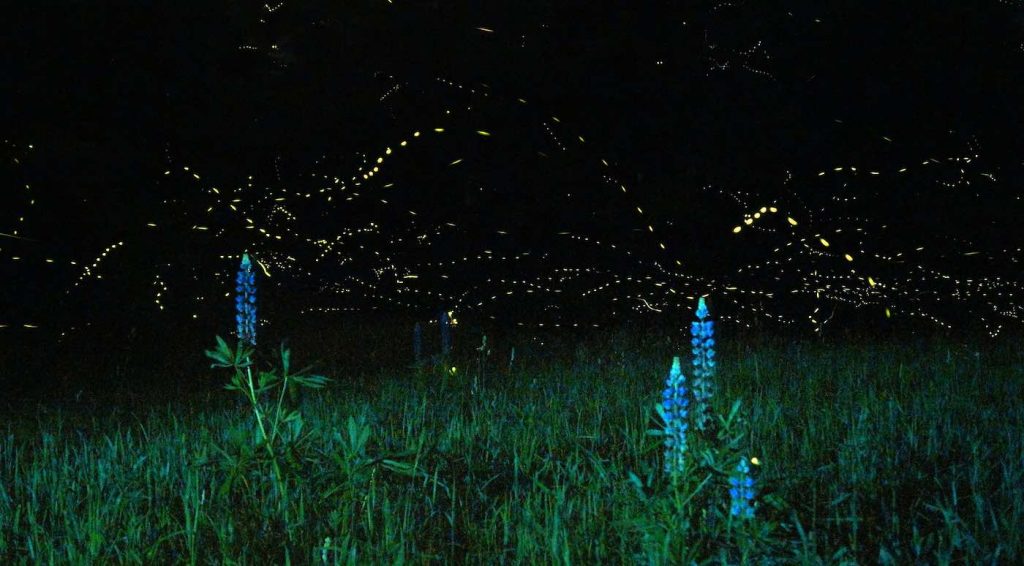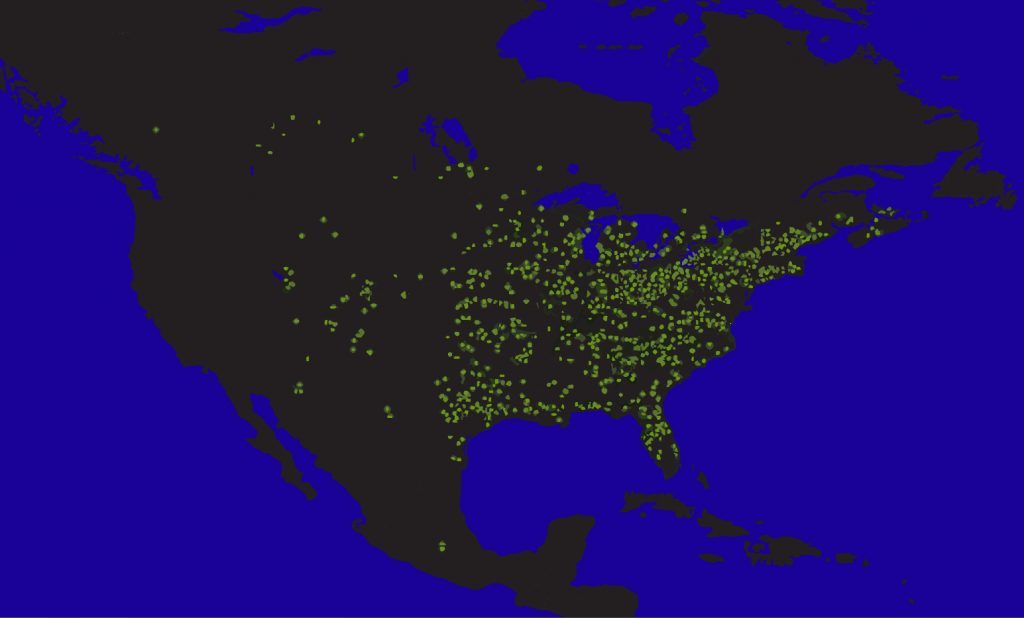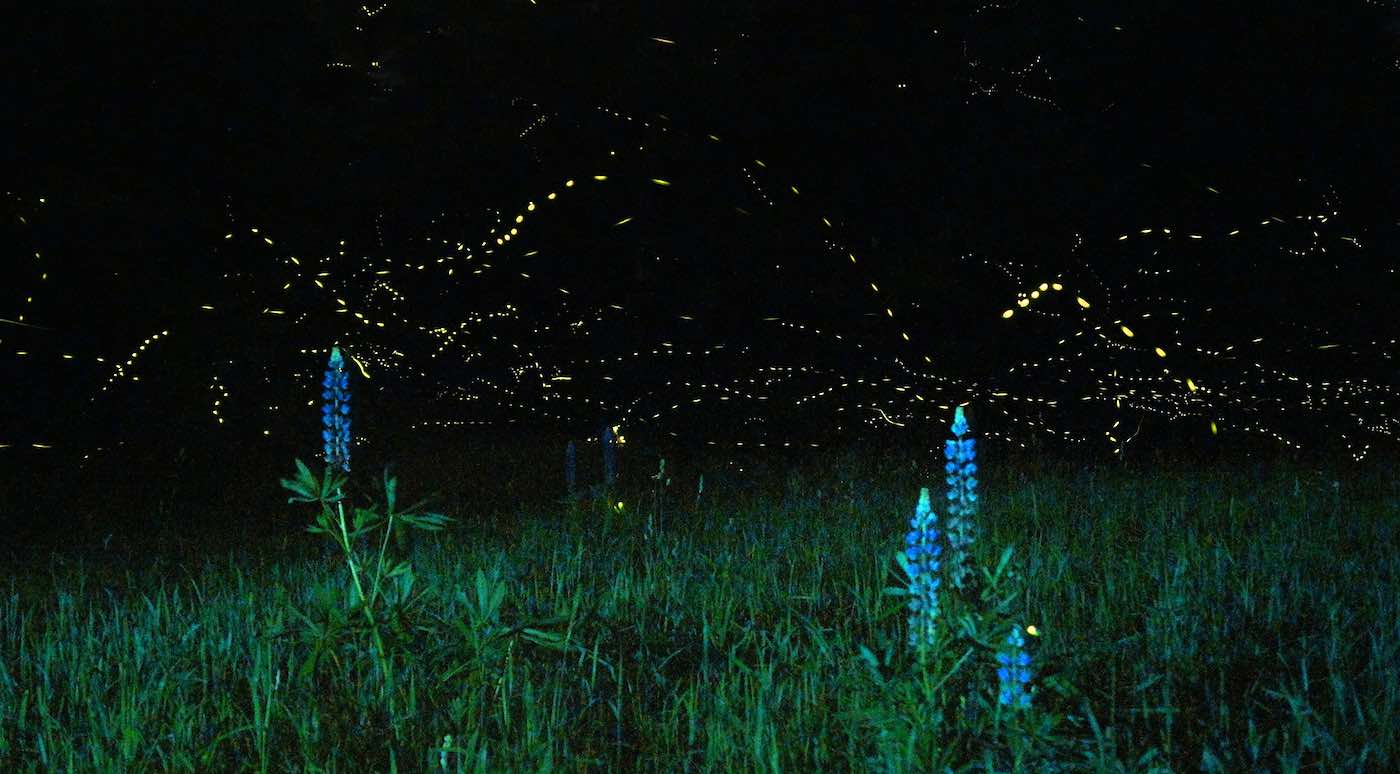 Summer is in full swing in the northern hemisphere, and with it comes longer days, more outdoor adventures, and evenings spent outdoors. For many of us, the arrival of summer is also synonymous with the arrival of fireflies. All across the central and eastern U.S. and Canada—and in small pockets of the West as well—fireflies can be seen performing their annual light show.
Summer is in full swing in the northern hemisphere, and with it comes longer days, more outdoor adventures, and evenings spent outdoors. For many of us, the arrival of summer is also synonymous with the arrival of fireflies. All across the central and eastern U.S. and Canada—and in small pockets of the West as well—fireflies can be seen performing their annual light show.
Fireflies have captured the human imagination for centuries. Their spectacular courtship displays elicit awe and delight in children and adults of all ages—yet their numbers appear to be dwindling.
One likely driver for this decline is ‘light pollution’. Put simply, fireflies need dark nights.
The bioluminescent beetles, which use various patterns of flashes and glows to communicate, can be outshone by bright lights from our cities, vehicles, roadways, and backyards. In fact, light pollution is impacting many species that are active at night or at dusk—including migrating birds.
Light pollution comes in several forms: skyglow (the haze over highly populated areas), light trespass (illumination that reaches beyond its intended or needed area), and glare (light that excessively illuminates areas or objects). These artificial light sources are increasing to the point that only a handful of areas in the U.S. and Canada are now truly dark at night.

The problem is, it can cause changes in animal behavior and affect species’ distribution, activity periods, and, ultimately, reproductive success. Fireflies are particularly at risk—with too much light obscuring their natural bioluminescence and interrupting signals used for mating and warding off predators.
In celebration of World Firefly Day this month, and in support of fireflies everywhere, the Xerces Society for Invertebrate Conservation encourages you to consider the impact your lighting activities may have on our nighttime fauna. Being thoughtful about outdoor lighting can benefit not only fireflies but also other nocturnal animals such as moths, bats, and sea turtles.
The most important step is to reduce or eliminate unnecessary outdoor lighting. For fireflies, this is especially important in the summer when adults are active. Below are several other ways you can keep areas as dark as possible at night, while still keeping them safe for humans.
Recommendations to Help Fireflies:
In areas where lights cannot be turned off at night, consider the following options:
- Swap bright light bulbs for dim red bulbs, which fireflies are less able to see—or filter existing bulbs to make them dimmer and redder.
- Limit outdoor illumination to desired areas such as sidewalks or pathways:
Place landscape lighting low to the ground to reduce the lit area. - Shield lights so they point down, rather than radiating outward in all 360 degrees.
- Use motion-detection and/or automatic timers so lights are on only as needed.
- Limit the number of hours per day that lights are kept on.
- Close your curtains or blinds at night when interior lights are on in order to reduce the amount of light that shines outside of your windows.
• Join or start a local chapter of the International Dark-Sky Association to advocate for local policies to control light pollution. In addition to helping fireflies and allowing people to appreciate the night sky, these initiatives often result in cost savings for municipalities and businesses—a win-win for all.
• Determine if your community is eligible for designation under the International Dark Sky Places Program, founded in 2001; if so, work with leaders to apply.
• Participate in community science dedicated to understanding the distribution and population trends of our many firefly species—Firefly Watch, a nationwide citizen science program run by Mass Audubon, and the Western Firefly Project, a western-focused project run by the Utah Natural History Museum.
Reprinted with permission from the Xerces Society for Invertebrate Conservation.
– Featured photo by Mike Lewinski / Flickr Creative Commons 2.0
HELP Fireflies by Sharing These Tips on Social Media…




















